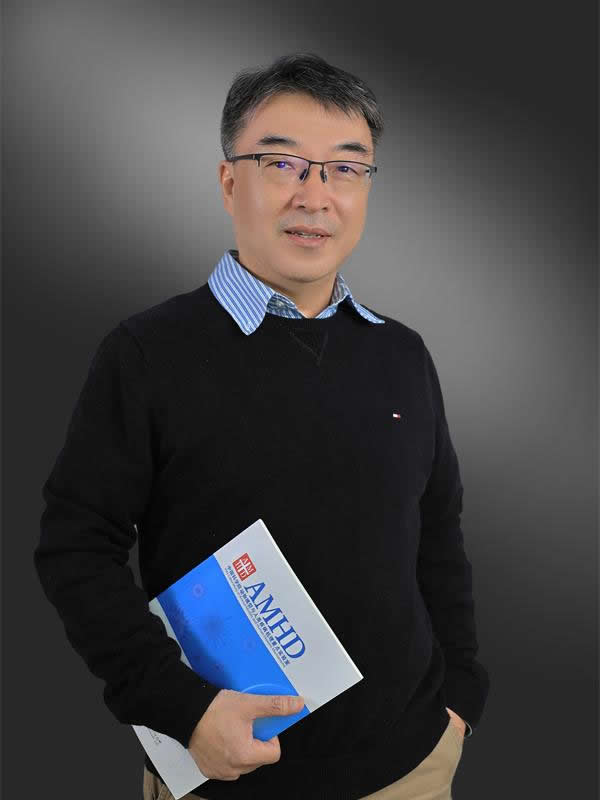1. Hu B., Huo Y., Yang L., Chen G., Luo M., Yang J. and Zhou J. (2017) ZIKV infection effects changes in gene splicing, isoform composition and lncRNA expression in human neural progenitor cells. Virol J., 14(1):217.
2. Lang F, Li X, Zheng W, Li Z, Lu D, Chen G, Gong D, Yang L, Fu J, Shi P and Zhou J. (2017). CTCF prevents genomic instability by promoting homologous recombination-directed DNA double-strand break repair. PNAS, 114:10912-10917.
3. Lang F, Li X, Vladimirova O, Hu B, Chen G, Xiao Y, Singh V, Lu D, Li L, Han H, Wickramasinghe JMASP, Smith ST, Zheng C, Li Q, Lieberman PM, Fraser NW and Zhou J. (2017). CTCF interacts with the lytic HSV-1 genome to promote viral transcription. Scientific Reports, 7.
4. Hu B, Huo Y, Chen G, Yang L, Wu D and Zhou J. (2016). Functional prediction of differentially expressed lncRNAs in HSV-1 infected human foreskin fibroblasts. Virol J., 13.
5. Hu B, Li X, Huo Y, Yu Y, Zhang Q, Chen G, Zhang Y, Fraser NW, Wu D and Zhou J. (2016). Cellular responses to HSV-1 infection are linked to specific types of alterations in the host transcriptome. Scientific Reports, 6.
6. Li L, Li Z, Li X, Wang E, Lang F, Xia Y, Fraser NW, Gao F and Zhou J. (2016). Reactivation of HSV-1 following explant of tree shrew brain. J. Neurovirology, 22:293-306.
7. Li L, Li Z, Wang E, Yang R, Xiao Y, Han H, Lang F, Li X, Xia Y, Gao F, Li Q, Fraser NW and Zhou J. (2016). Herpes Simplex Virus 1 Infection of Tree Shrews Differs from That of Mice in the Severity of Acute Infection and Viral Transcription in the Peripheral Nervous System. J. Virology, 90:790-804.
8. Li Z, Fang C, Su Y, Liu H, Lang F, Li X, Chen G, Lu D and Zhou J. (2016) Visualizing the replicating HSV-1 virus using STED super-resolution microscopy. Virol J., 13.
9. Lang F, Li X, Vladmirova O, Li Z, Chen G, Xiao Y, Li L, Lu D, Han H, Zhou J. (2015) Selective recruitment of host factors by HSV-1 replication centers. Zoological Research, 36:142-151.
10. Lin Q, Lin L, and Zhou J. (2010). Chromatin Insulator and the Promoter Targeting Sequence modulate the timing of long-range enhancer-promoter interactions in the Drosophila embryo. Developmental Biology,15;339(2):329-337.
11. Smith S, Wickramasinghe P, Olson A, LouKinov D, Lin L, Deng J, Xiong Y, Rux J, Sachidanandam R, Sun H, Lobanenkov V, and Zhou J. (2009). Genome wide ChIP-chip analyses of dCTCF reveal important roles for insulator proteins in Drosophila genome organization. Developmental Biology,15;328(2):518-28.
12. Chen Q, Lin L, Huang J, Smith S, Planck J, Berger S, and Zhou J. (2007) A CTCF dependent boundary exists in the LAT HSV-1 genome to separate latent and lytic specific genes. J. Virology, 81(10): 5192-201.
13. Lin Q, Chen Q, Lin L, Smith S, and Zhou J. (2007). The Promoter Targeting Sequence mediates enhancer interference in the Drosophila embryos. PNAS,104: 3237-3242.
14. Chen Q, Lin L, Smith S, Lin Q,and Zhou J. (2005). Multiple Promoter Targeting Sequences exist in Abdominal-B to regulate long-range gene activation. Developmental Biology, 286, 629-36.
15. Moon H, Filippova G, Loukinov D, Pugacheva E, Chen Q, Smith ST, Munhall A, Grewe B, Bartkuhn M, Arnold R, Ohlsson R, Zhou J, Renkawitz R, Lobanenkov V. (2005). CTCF is conserved from Drosophila to humans and confers enhancer blocking of the Fab-8 insulator. EMBO Rep., 6, 165-70.
16. ZhouJ, and Berger SL. (2004). Good fences make good neighbors: barrier elements and genomic regulation. Molecular Cell,16, 500-2.
17. Lin Q, Chen Q, Lin L, and Zhou J. (2004). The Promoter Targeting Sequence mediates epigenetically heritable transcription memory. Genes Dev.,18, 2639-51.
18. Lin Q, Wu D, and Zhou J. (2003). The promoter targeting sequence facilitates and restricts a distant enhancer to a single promoter in the Drosophila embryo. Development, 130, 519-26.
19. Zhou J, and Levine M. (1999). A novel cis-regulatory element, the PTS, mediates an anti-insulator activity in the Drosophila embryo. Cell, 99, 567-575.
20. Zhou J, Ashe H, Burks C, and Levine M. (1999). Characterization of the transvection mediating region of the Abdominal-B locus in Drosophila. Development, 126, 3057-3065.
21. Zhou J, Zwicker J, Szymanski P, Levine M, and Tjian R. (1998). TAFII mutations disrupt Dorsal activation in the Drosophila embryo. PNAS, 95, 13483-13488.
22. Zhou J, Cai HN, Ohtsuki S, and Levine M. (1997). The regulation of enhancer-promoter interactions in the Drosophila embryo. Cold Spring Harbor Symp Quant Biol., LXII: 307.
23. Zhou J, Barolo S, Szymansky P, and Levine M. (1996). The Fab-7 element of the bithorax complex attenuates enhancer-promoter interactions in the Drosophila embryo. Genes Dev., 10: 3195-3201.
24. Staudinger J, Zhou J, Burgess R, Elledge SJ, and Olson EN. (1995). PICK1: a perinuclear binding protein and substrate for protein kinase C isolated by the yeast two-hybrid system. J. Cell Biol., 128, 263-71.
25. Zhou J, and Olson EN. Dimerization through the Helix-loop-helix motif enhances phosphorylation of the transcription activation domains of myogenin. (1994). Mol. Cell Biol., 14, 6232-6243.
26. Li L, Zhou J, James G, Heller-Harrison R, Czech M, and Olson EN. (1992). FGF inactivates myogenic helix-loop-helix proteins through phosphorylation of a conserved protein kinase C site in their DNA binding domains. Cell, 71, 1181-1194.



